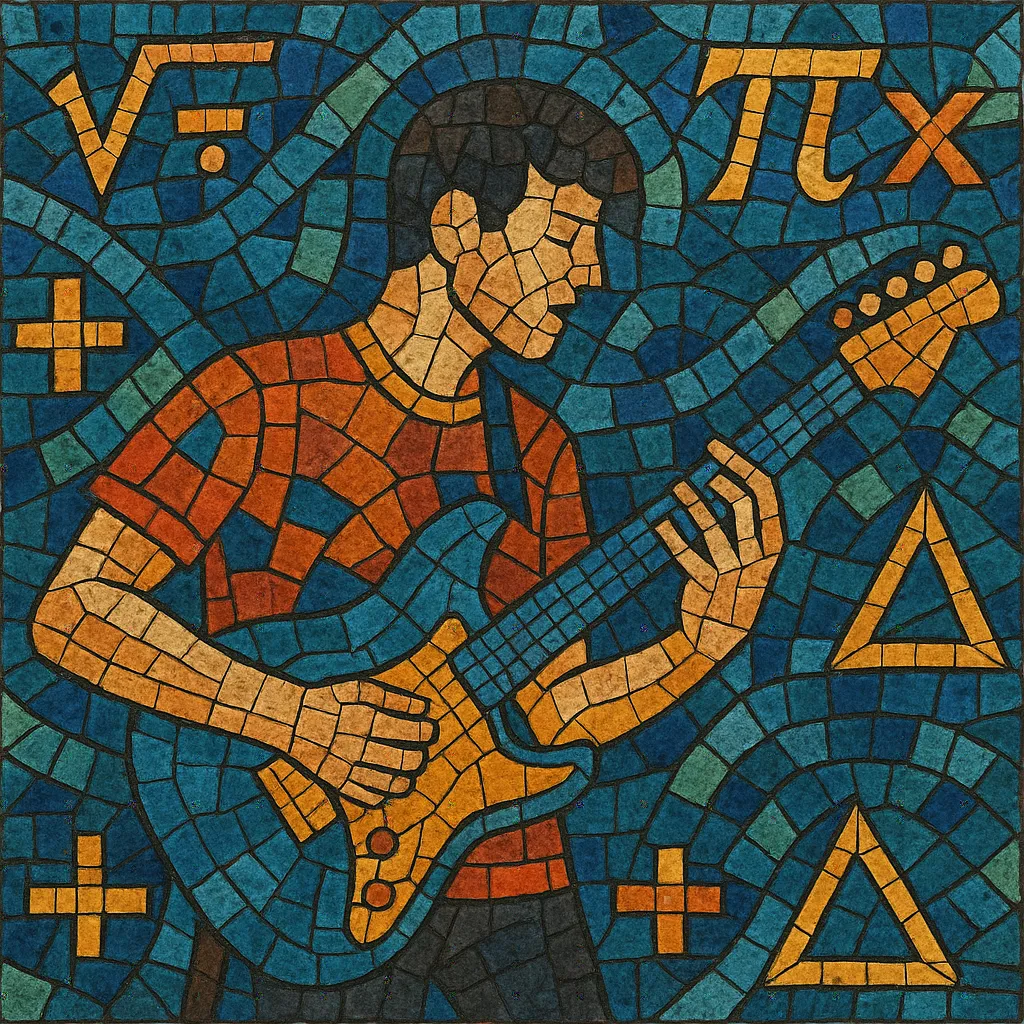Math pop blends the brainy rhythmic intricacy of math rock with the accessibility and hooks of pop.
It favors bright timbres, clean production, and earworm melodies while weaving in odd time signatures, polymeter, and angular, interlocking parts.
Guitars, synths, and tightly arranged rhythm sections emphasize staccato figures, sudden turnarounds, and irregular phrase lengths, yet songs typically retain verse–chorus structures and memorable refrains.
Vocals often lean toward agile, high-register lines (including falsetto), stacked harmonies, and lyrical themes that are literate or abstract, balancing heady construction with immediate, danceable energy.
Math pop emerged in the United Kingdom as indie bands absorbed the rhythmic complexity of math rock while prioritizing pop concision and hooks. Early touchpoints included UK acts orbiting the post-punk revival and art-pop scenes, with groups like Foals, Field Music, and Dutch Uncles spotlighted by British press for melding asymmetric meters with crisp, melodic songwriting.
The 2010s saw the sound mature and diversify. Everything Everything helped define a glossy, electronically tinged strain of math pop, while US and Japanese artists (e.g., Dirty Projectors, tricot, Maps & Atlases) showcased different pathways: avant-pop harmonies, syncopated guitar latticework, and a balance of experimentation and immediacy. Festivals and indie labels (e.g., Memphis Industries) fostered a community where rhythmic play coexisted with radio-friendly structures.
Across scenes, math pop retained several common traits: odd meters (5/4, 7/8, 11/8), polymetric layering, abrupt bar extensions, bright guitar/synth textures, and precise, punchy drums. Unlike math rock’s frequent instrumental or extended-form ethos, math pop tends to favor compact songs with clear choruses and lyrical hooks.
By the late 2010s and 2020s, math pop’s toolkit—tight interlocking parts, dance-aware grooves in asymmetric meters, and glossy art-pop production—filtered into indietronica, indie pop, and even strands of post-hardcore (e.g., swancore). As streaming and bedroom production normalized complex rhythmic grids, math pop’s once-niche rhythmic vocabulary became an accessible option for ambitious pop writers.


